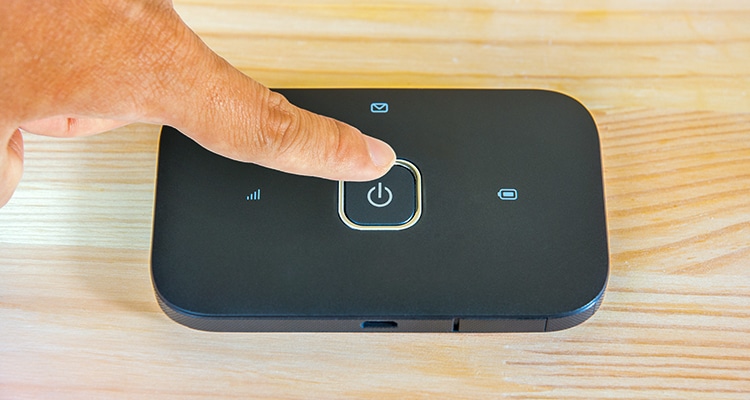Working from home is just like working in an office, except that you can do it in your pj’s, right? Wrong.
Yes, the set-up isn’t or shouldn’t have to be so different. You do still have to sit down at your desk and work on your deliverables, preferably during set hours. However, there are some crucial differences, and I don’t really recommend working in your pj’s either. (More on that later.)
Also, don’t be surprised if it takes time to get used to a WFH set-up. While it comes with a lot of advantages, it also presents some challenges that you wouldn’t find in a traditional office. You really do need to make certain adjustments, especially if you have kids or don’t live alone.
Fortunately, there are some things you can do to prepare if you’ve never worked from home before. These are fairly simple, but they would significantly make it easier for you to stay sane (!) and productive when you finally make the switch:
1. Pick the right working space.

Tempting as it sounds, don’t work in bed. It would be hard to stay productive if you’re too comfortable, and it’s bad for sleep hygiene too. (You might begin to associate your bed with work, and thus have difficulty sleeping later on.)
Instead, pick a quiet area in your house. If you’ve got a spare room, that’s even better. Do set up a desk and a chair that will give you enough back and lumbar support. This way, you can avoid back pains from poor posture.
You should also keep your workspace neat and clean, as you would in an office. It’ll be easier and faster if you don’t have to wade through clutter to retrieve anything you might need during your shift.
2. Check your internet connection. Prepare a back-up one, if needed.

A stable and serviceably fast internet connection is the lifeblood of your WFH career. Without it, you can do nothing.
If you’re uncertain about your service provider’s internet speed, you can use this link to check. Make sure the speed matches the minimum you need to get the job done (e.g., uploading, downloading, etc.).
It’s also a good idea to have a back-up internet connection. You don’t necessarily have to pay for another provider, though. There are some pretty good pocket wi-fi options out there that’ll do in a pinch.
3. While you’re at it, check your gear too.

By this, I mean your work set-up. Is your laptop’s software updated? Does it have a working anti-virus installed? Are your speakers working just fine? Have you got a functional headset on hand?
Much like a good internet connection, the right gadgets can make or break your WFH career. Not all companies can afford to provide their employees with such, so it’s important that you can still function with what you have on hand.
On the other hand, if your company does provide you with gear, try not to use it for your personal tasks. Not only is it unethical, but you also wouldn’t want to compromise your private details once you eventually return the equipment.
4. Familiarize yourself with your designated IT support.

Speaking of which, if your company has IT support, don’t hesitate to ask them for help if you run into technical issues. Be sure to ask your immediate supervisor for their contact details.
Otherwise, compile your own directory of repair personnel. This will certainly come in handy when you’re faced with dead pixels or the dreaded blue screen. If they provide home or office service, so much the better.
This also brings us to the next item…
5. Learn basic troubleshooting techniques.

One downside of working from home is that you are essentially a one-person team. If you experience technical difficulties, you can’t simply go to the IT department or have them come to your desk. Therefore, you have to at least be able to do some basic troubleshooting.
For starters, it would be helpful to know how to refresh your router or internet connection. The same goes for knowing how to install or download programs and applications as well as updating such.
6. Come up with your own work from home uniform.

Technically, you can wear whatever you want (or nothing at all, but let’s keep this wholesome) at home. However, there are plenty of benefits to getting dressed properly regardless.
The most compelling benefit, of course, is the productivity mindset that comes with the right clothes. Pajamas are soft and loose so that they’re conducive to sleep, but this also makes them unsuitable for working. So, rather than wearing your jammies all day (eww), take some time to change into decent working attire.
These don’t even have to be the usual slacks and button-down combo. A pair of leggings and a t-shirt would suffice so long as they’re clean.
7. Sit your family down to set expectations and ground rules.

It would be hard for you to get anything done if your kids or spouse keep barging in while you’re at work. Of course, they might not easily understand the WFH concept. Mommy/Daddy is home, so I can go to them anytime, right?
Hence, this would be a good opportunity to educate your family about your new set-up and to teach them about discipline and respect too. Explain that you need to remain absolutely focused during certain hours of the day, but that you can spend time with them afterwards and at lunch.
Do ensure them that they can still come to you in case an emergency arises. (Though you might want to define what an emergency is. Locating a missing teddy bear, for instance, is not an emergency.)
Above all, be grateful. Not everyone has the skills or the opportunity to work from home. Furthermore, this allows you to still earn a steady income while having more quality time with your family. Remote working also means you’re far less likely to pick up any diseases from work and pass them on to your loved ones.
Lastly, don’t forget to enjoy yourself. Working from home can be very rewarding and liberating, so long as you do it right.

